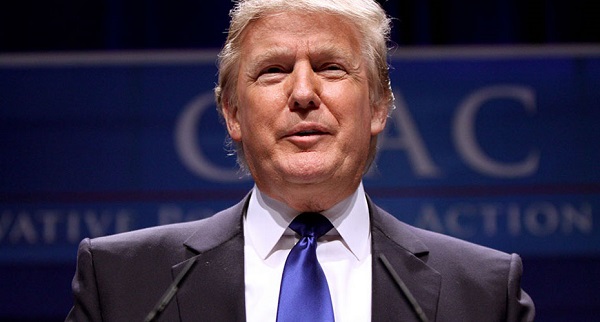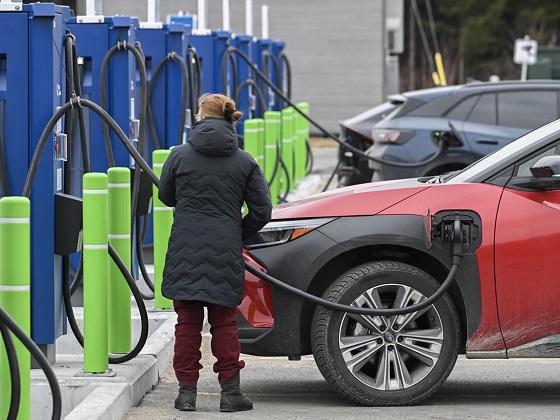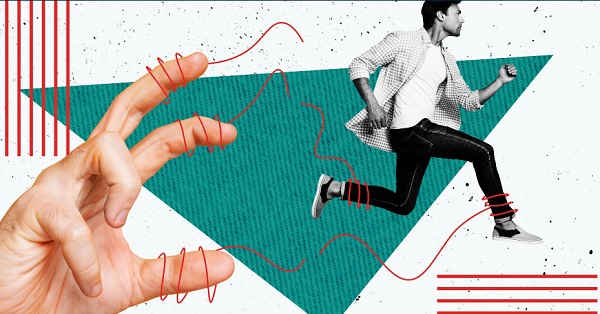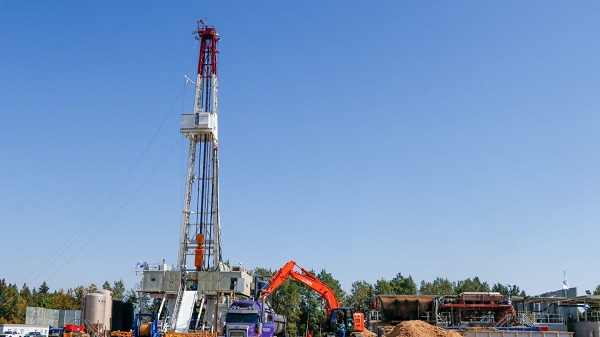Business
Trump’s steel tariffs will hit BC hard

From Resource Works
BC is a huge source of mettalurgical coal, which is used to make steel.
US President Donald Trump’s announcement of 25 percent tariffs on imported steel will send shockwaves through many industries but one of the hardest hit will be British Columbia’s coal industry. As the largest exporter of metallurgical coal in Canada, B.C. relies heavily on global steel production and these tariffs will reduce demand, destabilize prices and disrupt supply chains.
Unlike thermal coal used to generate electricity, over 95 percent of coal mined in British Columbia is metallurgical coal or coking coal. This coal is used to produce coke, a carbon rich fuel used to remove oxygen from iron ore in blast furnaces. Steel production is a big part of global industrial activity and B.C.’s coal industry exists because of that demand.
According to provincial data coal is B.C.’s most valuable mined commodity, generating billions of dollars in revenue each year. B.C. coal is exported mainly to Asian markets like Japan, China, South Korea and India but the US steel industry has been a customer too. A reduction in US steel production due to tariffs could disrupt global steel trade flows and reduce demand for metallurgical coal from B.C. miners.
Trump’s latest 25 percent tariffs on all steel imports is a repeat of what happened in 2018 when similar tariffs were introduced. At that time the tariffs increased costs for US manufacturers and led to retaliatory tariffs from Canada and other trade partners. The economic impact was big – Canadian steel and aluminum producers lost business and retaliatory tariffs were imposed on a range of American goods. The 2018 tariffs also didn’t revitalize US steel production which was 1 percent lower in 2024 than 2017 despite those protectionist measures.
This time the tariffs will hit even harder. Unlike 2018 when Canada and Mexico were eventually exempted after negotiations, this time Trump has said his tariffs will apply to “everybody”. That means the Canadian steel industry will once again be caught in the crossfire and with it the metallurgical coal industry that supplies it.
If Trump’s steel tariffs prevent U.S. manufacturers from importing steel due to higher costs, steel production will decline. That will mean lower global demand for metallurgical coal including B.C.’s high grade supply. B.C. coal miners are already facing challenges from environmental policies, competition from other jurisdictions and regulatory delays. A downturn in demand from steel producers could be the trigger for more mine closures or reductions in production.
Plus these tariffs could start another trade war. Canada retaliated in 2018 with tariffs on U.S. goods like orange juice and whiskey and similar measures may follow this time. The uncertainty will delay investment decisions in Canada’s mining sector especially for new projects or expansions that rely on stable steel demand.
The long term viability of metallurgical coal is already in question as the steel industry looks towards greener production methods like hydrogen based steelmaking. Sweden has already developed facilities that don’t require coking coal and while the transition to such technologies will take decades the latest trade disruptions could accelerate that shift.
Trump’s tariffs are meant to protect U.S. steel makers but history shows they often have the opposite effect, increasing costs for American manufacturers and economic instability for key trading partners. For B.C.’s coal industry the combination of declining steel demand, disrupted supply chains and potential trade retaliation puts the sector in a tough spot.
British Columbia’s coal industry is deeply connected to global steel production making it very exposed to Trump’s latest tariffs. The move will reduce demand for metallurgical coal, disrupt export markets and add more financial stress to the province’s miners. Given Trump’s track record on trade B.C. should prepare for economic uncertainty and look at diversification strategies to mitigate the impact of another round of U.S. protectionism.
Automotive
Power Struggle: Governments start quietly backing away from EV mandates

From Resource Works
Barry Penner doesn’t posture – he brings evidence. And lately, the evidence has been catching up fast to what he’s been saying for months.
Penner, chair of the Energy Futures Institute and a former B.C. environment minister and attorney-general, walked me through polling that showed a decisive pattern: declining support for electric-vehicle mandates, rising opposition, and growing intensity among those pushing back.
That was before the political landscape started shifting beneath our feet.
In the weeks since our conversation, the B.C. government has begun retreating from its hardline EV stance, softening requirements and signalling more flexibility. At the same time, Ottawa has opened the door to revising its own rules, acknowledging what the market and motorists have been signalling for some time.
Penner didn’t need insider whispers to see this coming. He had the data.

Barry Penner, Chair of the Energy Futures Institute
B.C.’s mandate remains the most aggressive in North America: 26 per cent ZEV sales by 2026, 90 per cent by 2030, and 100 per cent by 2035. Yet recent sales paint a different picture. Only 13 per cent of new vehicles sold in June were electric. “Which means 87 per cent weren’t,” Penner notes. “People had the option. And 87 per cent chose a non-electric.”
Meanwhile, Quebec has already adjusted its mandate to give partial credit for hybrids. Polling shows 76 per cent of British Columbians want the same. The trouble? “There’s a long waiting list to get one,” Penner says.
Cost, charging access and range remain the top barriers for consumers. And with rebates shrinking or disappearing altogether, the gap between policy ambition and practical reality is now impossible for governments to ignore.
Penner’s advice is simple, and increasingly unavoidable: “Recognition of reality is in order.”
- Now watch Barry Penner’s full video interview with Stewart Muir on Power Struggle here:
Business
New Chevy ad celebrates marriage, raising children

From LifeSiteNews
By Matt Lamb
Chevrolet’s new Christmas ad portrays the ups and downs of family life and the fun of parenting.
Car company Chevrolet launched its Christmas ad campaign with a beautiful commercial that highlights the messiness of raising kids while championing the value of having a family.
The ad, titled “Memory Lane,” shows a middle-aged married couple loading up their decades-old Chevy Suburban with food to head off to a family dinner. At this point, the ad switches between the couple in the present day and grainy, recorder-quality video of family memories.
It begins with a young family, including a baby, loading up into the same car. As the couple begins to drive, the wife and mom is reminiscing. The husband asks her not to “keep all the good stuff” to herself.
From there, the ad reflects on the ups and downs of the family’s life, including memories of mistakenly tying a Christmas tree to the car door and comforting their college-aged daughter about a break-up. As the couple pulls up to a house at the end of their trip, the wife turns to her husband and says: “They never made it easy, did they?”
“Did you want it to be easy?” he replies.
“No, I wanted it to be just like it was,” she says, before they exit the car to meet family, including a grandchild and a new dog that looks like their old dog.
“The greatest journey is the one we take together,” the ad ends.
Commercial accurately portrays that family life isn’t easy, but it is fun
Anyone who has kids knows that it is not always easy raising them, but it is enjoyable. They scream, they cause messes, they wake you up in the middle of the night. And that’s just before they turn five years old. It only gets more enjoyable, and more difficult, as they age (from what I can tell).
Even if you do not have kids, you can probably remember your own life and think about the ways you caused your parents headaches (getting a bad grade in a class or breaking the curfew), but also the ways you brought them joy (graduating from college, joining the military, or getting married).
The truth is that families are messy, and no one is guaranteed an easy life. But the important thing is to persevere by sticking together.
Another thing that stuck out is that both parents remained married throughout their life and are celebrating Christmas with both of their children.
One of the kids did not avoid Christmas because dad voted for Trump or because mom has strongly held religious beliefs – something that does happen to the glee (and detriment) of leftist writers. The entire family, not just those who perfectly agree with each other, were together for the holidays. In fact, this is one way we honor our father and mother, by getting together over the holidays and at other family gatherings.
As a parent myself, I sometimes wish it would be “easy,” but the truth is the ups and downs are what make it enjoyable.
Thank you to Chevy for reminding me, and other parents, of this lesson.
-

 National2 days ago
National2 days agoMedia bound to pay the price for selling their freedom to (selectively) offend
-

 Business2 days ago
Business2 days agoIs there a cure for Alzheimer’s Disease?
-

 C2C Journal2 days ago
C2C Journal2 days agoLearning the Truth about “Children’s Graves” and Residential Schools is More Important than Ever
-

 Bruce Dowbiggin2 days ago
Bruce Dowbiggin2 days agoSometimes An Ingrate Nation Pt. 2: The Great One Makes His Choice
-

 Alberta2 days ago
Alberta2 days agoNew era of police accountability
-

 Brownstone Institute1 day ago
Brownstone Institute1 day agoThe Unmasking of Vaccine Science
-

 Alberta1 day ago
Alberta1 day agoEmissions Reduction Alberta offering financial boost for the next transformative drilling idea
-

 Business17 hours ago
Business17 hours agoRecent price declines don’t solve Toronto’s housing affordability crisis







